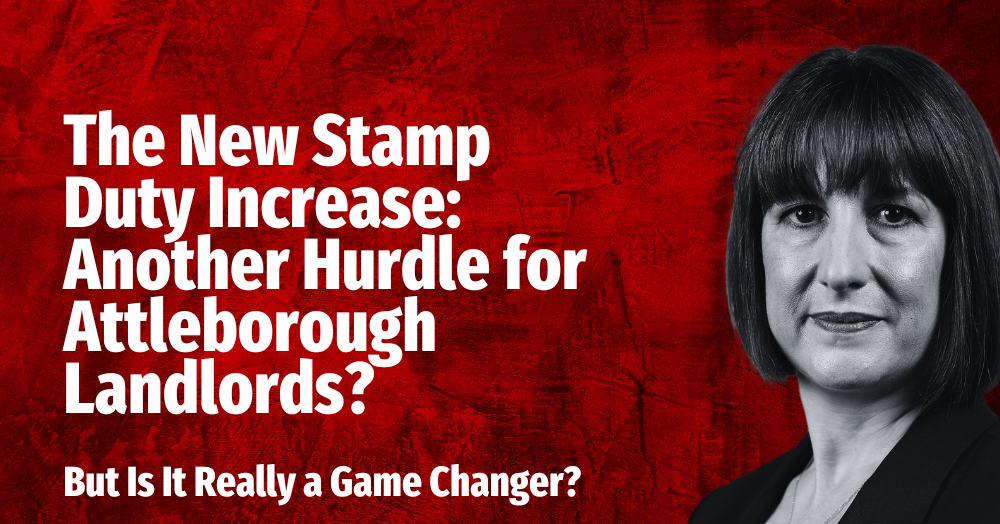The government announced an increase in stamp duty for second home purchases. Buyers of additional properties, including buy-to-let investments and holiday homes, will face a higher rate of stamp duty compared to primary residences.
Over the past eight years, landlords have faced a barrage of new regulations and tax changes. From the original 3% stamp duty surcharge introduced in 2016 to Section 24’s limitation on mortgage interest relief, the new Renters' Rights Act passing through parliament with its removal of Section 21, and recent reductions in capital gains tax allowances – it’s fair to say that buy-to-let (BTL) investors have been under relentless pressure.
Add to these the looming EPC regulations requiring properties to meet tougher standards in the next five to six years, and it’s understandable why some landlords feel stretched to the limit.
The latest increase in stamp duty – raising the surcharge from 3% to 5% for buy-to-let properties – feels like yet another layer of financial burden.
However, while this new tax may seem daunting, it’s crucial to take a step back and consider the bigger picture.
For landlords with a long-term view, this extra cost is unlikely to fundamentally alter the viability of their investment. This one-off expense becomes “lost in the sands of time” when spread over the lifetime of an investment. Yes, it’s an upfront cost and, as with any cost, never welcome. But for the majority of BTL investments, this increase won’t drastically alter the fundamentals. In fact, it’s like when the initial 3% surcharge was implemented in 2016; back then, very few landlords were deterred, and the market quickly adapted.
Another reason landlords can stay positive is the remarkable rental growth seen over the past few years. In the last few years, rents have risen annually by around 8-10%, fuelled largely by strong wage growth and the continued demand-supply imbalance in the rental market.
With minimum wages rising and renters’ purchasing power up by 8.44% since 2015 (even after accounting for inflation), rental prices are likely to continue rising, creating a steady income stream for landlords. As wages grow, rents follow suit, which bolsters the case for long-term BTL investment as a viable strategy.
Furthermore, capital gains tax, though perceived as a deterrent, was actually
reduced last year for higher-rate taxpayers, from 28% to 24% on residential property, which helps retain more of the gains made on property sales. Labour have made no change to that.
Additionally, while current market conditions have shifted, UK house prices in real terms are 15.1% cheaper than they were three years ago, something else that makes buy-to-let a great opportunity.
For savvy investors, this makes now a potentially favourable time to secure a deal, even if it means absorbing a slightly higher stamp duty cost upfront.
While landlords are certainly facing pressures from the new EPC regulations in the coming years, history shows that when the government mandated the EPC rating to an "E" in 2018, it tempered the impact to avoid a market disruption with a maximum of £3,500 maximum spend to reach that level. It’s likely we’ll see a similar approach this time if it risks an excessive withdrawal of rental properties from the market.
Ultimately, the buy-to-let market remains one of the few investment avenues where one can achieve both income and capital growth.
Attleborough landlords may need to consider this stamp duty increase when negotiating purchase prices, but for those with a long-term perspective, this is simply another bump in the road.
While change is inevitable, BTL still represents a sound investment – especially for those who are in it for the long haul.

